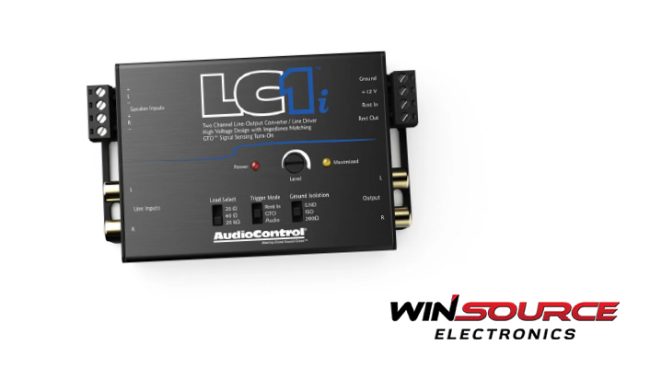
Introduction
Line drivers emerge as pivotal components in the fast-paced world of high-speed electronics. But what exactly are these devices, and why are they so crucial? This blog post delves into the intricate world of line drivers, exploring their definition, fundamental characteristics, and the diverse types that cater to different technological needs.
From maintaining signal fidelity over long distances to their specialized roles in PCBs and high-speed digital communication, line drivers are the unsung heroes in our interconnected world.
Discover how these vital components ensure the integrity and efficiency of signal transmission across various platforms, and learn about their essential role in modern electronics. This exploration promises to comprehensively understand line drivers and their indispensable function in high-speed signal transmission. Top of Form
What are Line Drivers?
Definition and Function
A line driver is an electronic amplifier circuit designed to drive a load like a transmission line. Its primary function is to strengthen the signal for long-distance transmission without degradation.
Fundamental Characteristics of Line Drivers
Essential in Long-Distance Signal Transmission
Line drivers are critical in systems requiring long-distance signal transmission. Their ability to amplify signals without loss of quality ensures the integrity of communication over extended distances, a crucial aspect in modern telecommunications and data networks.
Maintaining Signal Fidelity
Their primary role is to preserve the fidelity of the signal, which is prone to attenuation and interference over long cables. By boosting the signal, line drivers play a vital role in maintaining the clarity and strength of the transmitted data.
Types of Line Drivers
There are various types of line drivers, such as Analog Circuit Line Drivers and High-Speed Signal Line Drivers. Each type caters to specific needs and ensures optimal performance in different contexts.
Analog Circuit Line Drivers
These line drivers are specifically designed for analog circuits, where they amplify analog signals. Their design is tailored to preserve the nuanced variations of analog signals essential in audio, video, and sensor applications.
High-Speed Signal Line Drivers
Catering to the needs of digital communication, these line drivers are engineered for high-speed data transmission. They are essential in environments where rapid signal transmission is required, such as high-speed internet connections and data centers.
Specialized Variants
Beyond these are specialized line drivers for specific applications, such as those used in industrial control systems, automotive electronics, and medical equipment. Each variant is designed to meet the unique demands of its application, ensuring optimal performance and reliability.
Varieties and Specific Applications
Importance in High-Speed Signal Transmission
Enhancing Signal Integrity
Line drivers are instrumental in high-speed signal transmission primarily because they can enhance signal integrity. They combat signal degradation, particularly in high-speed data transfer scenarios.
The amplification provided by line drivers ensures that the signal remains robust and transparent, irrespective of the distance it travels or the speed at which it is transmitted. This integrity is crucial in maintaining the accuracy and reliability of data communication.
Line Driver for PCBs
Crucial Role in PCB Functionality
Line drivers within Printed Circuit Boards (PCBs) are essential for their functionality. These drivers are responsible for facilitating the high-speed transfer of electronic signals across the intricate pathways of a PCB. Their role is not just limited to signal transmission but also includes signal integrity maintenance within the complex environment of a PCB.
Enhancing PCB Performance
Incorporating line drivers in PCBs plays a pivotal role in enhancing overall performance. They ensure signals are transmitted efficiently and reliably, which is especially critical in high-performance electronics where precision and speed are paramount.
Addressing PCB Design Challenges
Line drivers also address various design challenges in PCBs, such as minimizing signal loss and interference, which are common issues in densely packed electronic circuits. Their strategic placement and design are tailored to counteract these challenges, ensuring the PCB’s optimal functionality.
WIN SOURCE’s Role in Providing Line Drivers
Specialty in Obsolete and Hard-to-Find Parts
WIN SOURCE distinguishes itself in the electronics components market by specializing in sourcing obsolete and hard-to-find line drivers. Their extensive network and deep market knowledge enable them to procure these rare components essential in maintaining legacy systems and equipment.
This capability is precious in industries where updating or replacing older systems is not feasible or cost-effective.
Commitment to Quality and Customer Satisfaction
WIN SOURCE’s dedication to quality is evident in its rigorous vetting process for line drivers, ensuring that each component meets high performance and reliability standards. Their commitment extends to providing exceptional customer service, focusing on understanding and fulfilling customer needs.
The customer-centric approach has established WIN SOURCE as a trusted partner in the electronic components distribution sector.
From PCBs to complex digital systems, line drivers ensure signals’ clarity, strength, and fidelity across various electronic applications. Their specialized forms, including analog circuits, line drivers, and high-speed signal line drivers, cater to diverse needs, demonstrating their versatility and indispensability.
Companies like WIN SOURCE, which focuses on providing hard-to-find line drivers, highlight ongoing demand and the critical nature of these components in maintaining legacy systems and supporting new technologies.
In essence, the significance of line drivers in modern electronics cannot be overstated; they are fundamental in driving the efficiency and reliability of our interconnected world.

COMMENTS